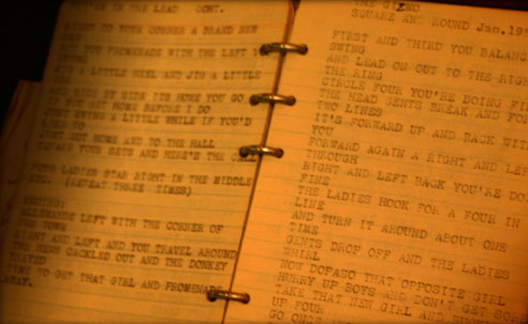Ozark Jubilee Memories
— by Don Baker, from the Ralph Foster Museum archive
The Promenaders Square Dance Team was an outgrowth of a square dance club organized at Southwest Missouri State University in the early 1950s. A team was selected from this club to compete in the Ted Mack Original Amateur Hour, which they won, and led to them becoming regulars on the Ozark Jubilee in 1955, shortly after it began. I joined the group in late 1956 and was with them until late 1959.
Western-style square dancing was very popular where the accent is on the intricate figure work, but square dancing in the Ozarks evolved form the intricate foot work of the Irish jig dance. The uniqueness of the Promenaders was that we combined the two styles. The result was an energetic, colorful and fast-moving act.
The Ozark Jubilee was broadcast on ABC-TV nationwide on Saturday night and was rated the number one TV show in 1958 and 1959. Because of the show's popularity and an aggressive booking agency — Top Talent — personal appearances were in demand throughout the USA and Canada.
Our favorite entertainer was the star of the Jubilee, Red Foley.
He was like a father to all of us and I will always cherish the relationship we had. None of us will ever forget those songs of faith and inspiration. The regular cast of the Ozark Jubilee was like a huge family. We looked out for each other and enjoyed being together.
The regulars were Uncle Cyp, Brenda Lee, Billy Walker, Leroy Van Dyke, Bobby Lord, Norma Jean, Suzie Arden, Jimmy Gateley, Harold Morrison, Slim Wilson, Speedy Haworth, Bob White, Doc Martin, Cecil Brower, Johnny Gailey and our caller, LD. Keller — who was the most patient man I ever knew.
Mr. Keller had a very special and unique talent to call to our fast-paced cadence.
Continued Above Right...
plate 1. An original callbook from the Ozark Jubilee, Courtesy of the Ralph Foster Museum.
Ozark Jubilee Memories (Continued)
During my time with the group, we performed, or were in, 42 states and three provinces of Canada. In 1959, we criss-crossed most of the USA, traveling around 90,000 miles (the majority of which was by car).
Our primary venues were state and county fairs, auditoriums, and rodeos.
We also had performances at Madison Square Garden, the Boston Gardens, the Blue Room of the Hotel Roosevelt in New Orleans, and Rock Creek Park in Washington, D.C.
Many times we would take to the road immediately following the Saturday night show, do one-night stands all week, and return the following Saturday for the next episode. All this would be accomplished by driving 3,000 miles, the majority of which was two-lane highways.
We were on stage, met, and performed with just about every country entertainer in the business at the time.
These included Eddie Arnold, George Jones, Johnny Cash, Patsy Cline, Roy Acuff, Minnie Pearl, Webb Pierce, Sonny James, Homer and Jethro, Bob Wills, Marty Robbins, Jim Reeves, Johnny Horton, Tex Ritter, Grandpa Jones, and Ernest Tubb (just to name a few).
We also did package shows with Gene Autry, Rex Allen, Pat Boone, and Porter Waggoner.
With a group the size of the Promenaders, turnover was to be expected.
From late 1957 through 1959, however, we primarily kept the same group. With the discipline and teamwork required, as well as the travel and all that it entailed, we developed a special bond. To this day, we still have reunions and many of us get together several times a year.
It is a relationship that still exists and is one of the highlights of my life.
Many times I have been asked if I had my life to live over would I do it again, and my answer is always, “You bet.”
The one thing I regret is not having kept a journal of our activities because we did not realize that the first nationally televised country music show, the Ozark Jubilee, would make history and the Promenaders would be fortunate enough to be included in a small part of it.
— Don Baker, Ozark Jubilee square dancer, the class of 1950, School of the Ozarks high school alumni.
Ralph Foster Article reprint...
The staff of College of the Ozarks' Ralph Foster Museum has graciously allowed the reprint of these articles from their archive September 21, 2008.




